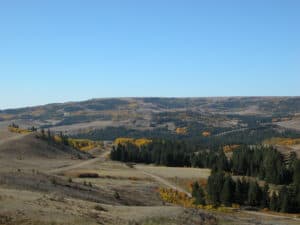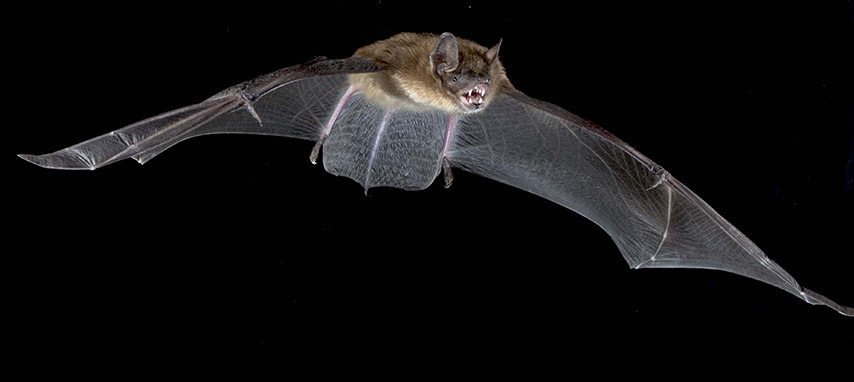Share this article
JWM: Bat colonies relocate when trees fall
Bat maternity colonies will pick up and change forest areas when the quality of their home trees deteriorate, according to new research.
This discovery, the first to report the movement of bats to a new patch of forest in response to the natural loss of trees, highlights the importance of conserving live and dead trees in forest areas in order to give big brown bats (Eptesicus fuscus) suitable present and future homes, said Kristin Bondo, a postdoctoral researcher at Texas Tech University and lead author of a study published recently in the Journal of Wildlife Management.
Bondo, who conducted this research as part of her master’s work at the University of Regina in Canada, was working with her colleagues on a larger project studying big brown bats in Saskatchewan in the Cypress Hills Interprovincial Park.
Before Bondo’s colleagues began to research bats in this area, little was previously known about where the flying mammals make homes when human structures aren’t around. “In the East, with big brown bats, they primarily roost in buildings,” Bondo said.
But her colleagues had discovered a colony of big brown bats in Saskatchewan roosting in holes in aspen trees in 1993, and researchers later began to monitor them.

Researchers studied the bats in the Cypress Hills Interprovincial Park in Saskatchewan, Canada. ©Kristin Bondo
“Maternity colonies of several species of forest-roosting bats, including the big brown bats in the Cypress Hills, roost in tree cavities during the day and switch roost trees and roost mates every 2-3 days. They reuse the same trees and same patches of forests over several years,” said Bondo.
Starting in 2004, they suddenly began losing their research subjects, which abandoned a roosting area that they had come back to for several years because some of the dead trees were blown down by the wind.
Luckily the bats were radio tagged. Bondo and her colleagues managed to track them down after much effort attempting to pick up the radio signals in the provincial park.
They found the bats about 4 miles away in another stand of trees, and over the next few years, most of the colony moved to the new location.
Subsequent research showed that the bats only started to move when 18% of the trees in their former roosting colony had fallen.
They also found that the roost trees in the new patch of forest were less likely to fall down than those in the former patch of forest. “This is likely because the roost trees in the old patch of forest were in later stages of decay than those in the new forest patch,” said Bondo
Bondo said the research is important for bat conservation and forest management because it shows how tree roost loss can impact bat colonies.
“Bats are currently facing a wide variety of threats including mortality from white-nose syndrome, wind turbines, and habitat loss, so it is important to understand how bats colonize new areas and what triggers them to relocate to new roosting areas,” Bondo said.
This article features research that was published in a TWS peer-reviewed journal. Individual online access to all TWS journal articles is a benefit of membership. Join TWS now to read the latest in wildlife research.
Photo: 1
Header Image: Big brown bats roost during the day in buildings or in the cavities of decayed trees. ©Brock Fenton








